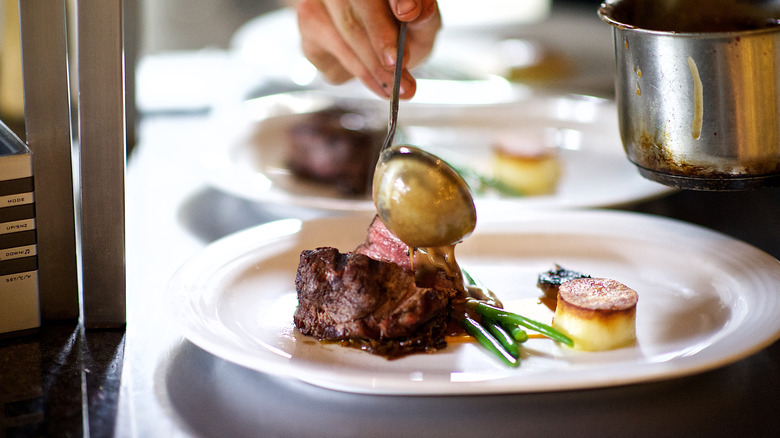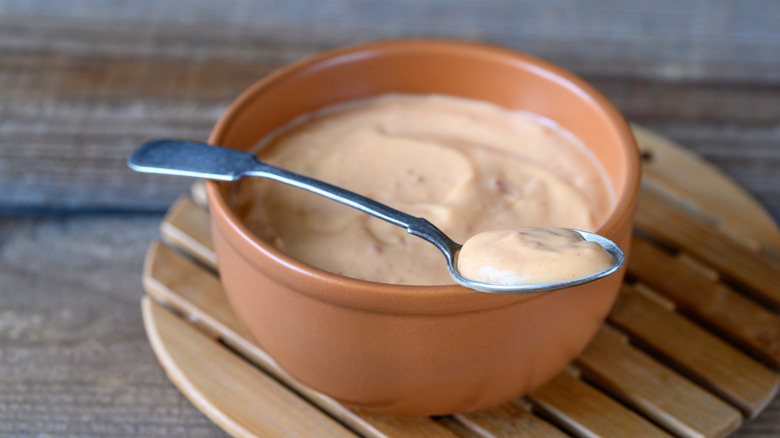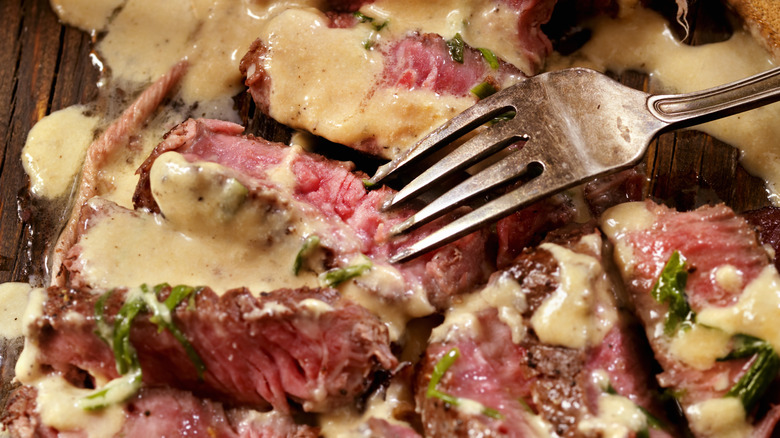Choron Sauce Is Begging To Be Slathered On Steak
Some people argue that a properly made steak needs nothing more than a bit of salt and pepper, while others believe that the right sauce can elevate the flavor. But though most chefs agree that condiments like A1 and Worcestershire sauce can easily cheapen or overpower the taste of a steak, it isn't uncommon for fancier steakhouses to serve it with some sort of herb butter sauce, chimichurri, or au jus.
These types of sauces not only make steak juicier, but they can also balance out the fattiness and smokiness of the grilled meat with bright or acidic ingredients like lemon juice and fresh herbs. In France, steak is often served with béarnaise, an all-purpose sauce made with vinegar or lemon, egg yolks, butter, and herbs. Other variations of béarnaise sauce include foyot, paloise, tyrolienne, and choron, and while any of these can taste great on steak, choron is arguably the best option.
What is choron sauce?
Choron sauce is made exactly like a béarnaise sauce but with one extra step. Instead of stopping once the egg yolks, butter, and vinegar are emulsified, you add tomato in the form of freshly pureed tomatoes or store-bought tomato paste. Traditionally béarnaise sauce is also seasoned with peppercorn, minced shallots, tarragon, and chervil, but in a choron, tarragon and chervil are sometimes excluded, letting the tomato flavor shine.
Despite its similarities to béarnaise sauce, choron sauce ends up tasting fairly different. Because of the tomatoes, it takes on a sweeter flavor that is somewhat comparable to Russian dressing. If you decide to leave out the tarragon and chervil from your choron, it also won't have the licorice-like notes that the two herbs usually contribute. The flavor of choron is versatile enough to be used on everything from vegetables to meat, much like a béarnaise, but the sauce goes particularly well with steak.
Why choron sauce goes well with steak
Because it's a derivative of béarnaise, choron sauce has the same two ingredients that brighten up the fatty, smokey flavors of steak — vinegar and herbs. But since it also has tomato paste, which is both sweet and acidic, choron adds a flavor to steak that béarnaise simply doesn't. Increasing the complexity of the flavors in a dish can always take it to the next level, but the tomatoey taste of choron isn't the main reason it goes well with steak. It's actually the glutamate in the tomatoes.
Glutamate is a naturally occurring amino acid, and when combined with inosinate and guanylate, it creates umami. Tomatoes don't have any of the other compounds besides glutamate, however, beef contains inosinate. When you combine beef and tomatoes by putting choron sauce on steak, you essentially increase the umami of your dish. This combined with the steak-enhancing properties of its béarnaise base makes choron the perfect steak sauce.


